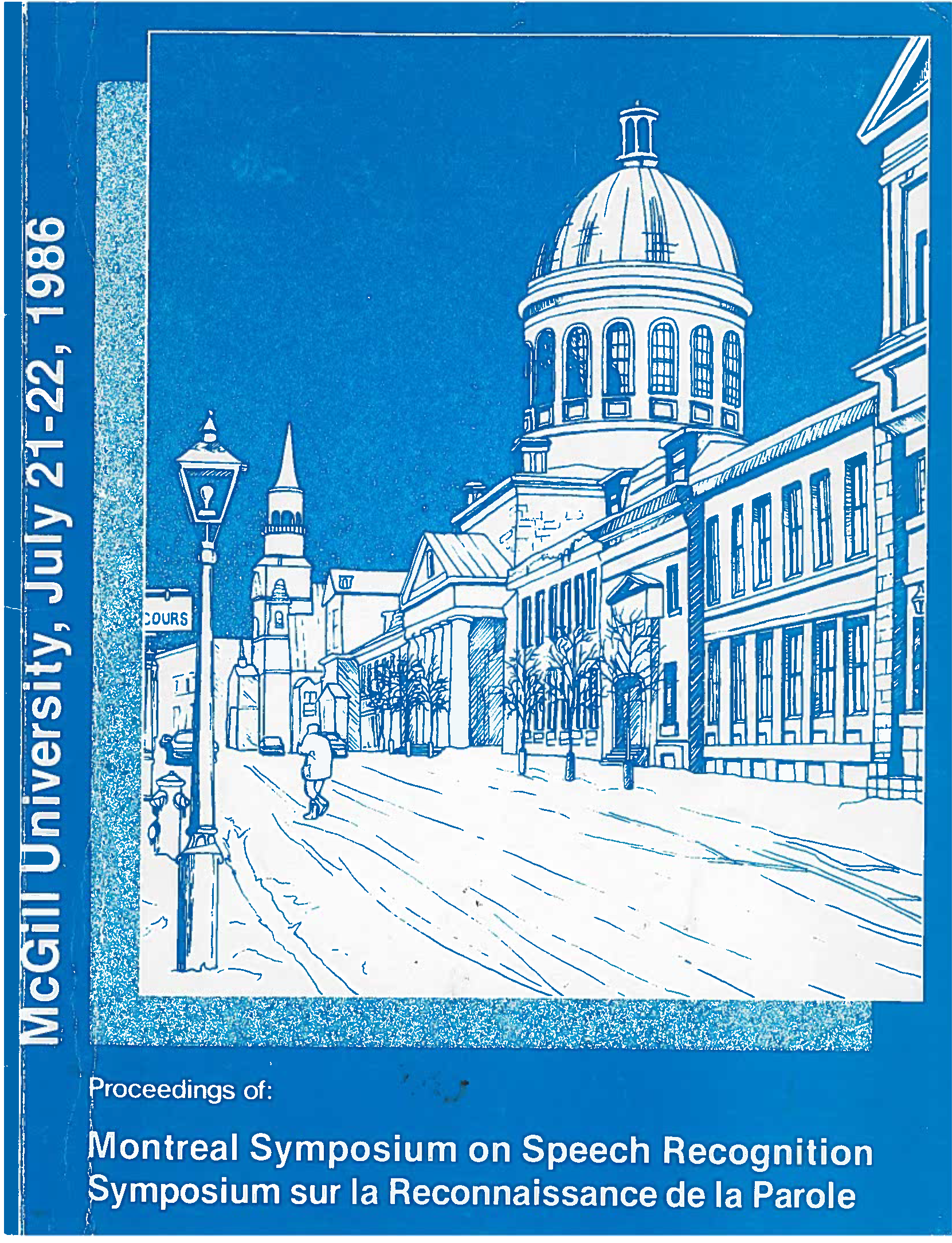The Role of Structural Constraints in Auditory Word Recognition
Abstract
In the past, much of the research on human speech perception pas focused on the recognition of acoustic-phonetic properties of isolated CV and cvc syllables. The tacit assumption of this research has been that our understanding of auditory word recognition is contingent upon solving the problems inherent in phoneme perception. By this assumption, auditory word recognition is equivalent to visual word recognition carried out one letter at a time. Indeed, most current theories of auditory word recognition directly reflect this sequential pattern matching approach to word recognition. However, a different perspective is that word perception may be approached as a problem of "weak" constraint satisfaction, in which the structural properties of words in the lexicon interact to specify the identity of an utterance. we will present the results of several analyses of the phonotactic constraints of word patterns that suggest the type of constraints that may be used by human listeners to mediate spoken word recognition.
Additional Files
Published
How to Cite
Issue
Section
License
Author Licensing Addendum
This Licensing Addendum ("Addendum") is entered into between the undersigned Author(s) and Canadian Acoustics journal published by the Canadian Acoustical Association (hereinafter referred to as the "Publisher"). The Author(s) and the Publisher agree as follows:
-
Retained Rights: The Author(s) retain(s) the following rights:
- The right to reproduce, distribute, and publicly display the Work on the Author's personal website or the website of the Author's institution.
- The right to use the Work in the Author's teaching activities and presentations.
- The right to include the Work in a compilation for the Author's personal use, not for sale.
-
Grant of License: The Author(s) grant(s) to the Publisher a worldwide exclusive license to publish, reproduce, distribute, and display the Work in Canadian Acoustics and any other formats and media deemed appropriate by the Publisher.
-
Attribution: The Publisher agrees to include proper attribution to the Author(s) in all publications and reproductions of the Work.
-
No Conflict: This Addendum is intended to be in harmony with, and not in conflict with, the terms and conditions of the original agreement entered into between the Author(s) and the Publisher.
-
Copyright Clause: Copyright on articles is held by the Author(s). The corresponding Author has the right to grant on behalf of all Authors and does grant on behalf of all Authors, a worldwide exclusive license to the Publisher and its licensees in perpetuity, in all forms, formats, and media (whether known now or created in the future), including but not limited to the rights to publish, reproduce, distribute, display, store, translate, create adaptations, reprints, include within collections, and create summaries, extracts, and/or abstracts of the Contribution.


